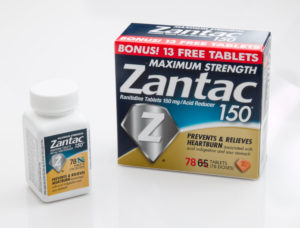Does Parkinson’s need to meet Mary Jane?
This month, CNN has been broadcasting an in-depth documentary about medical marijuana.
Yes, Weed. Reefer, Mary Jane, the Big J and whatever other names it has.
Despite all the U.S. politics surrounding the use of medical marijuana, this blog is meant to reflect on what almost got thrown out in the trash.
One certain marijuana plant—a mutant, the legalized Colorado growers said—almost got tossed out of the greenhouse because the plant exhibited such dismally low amounts of THC, the chemical compound that gets users “high,” and, therefore, the plant had been deemed not commercially viable.
Until Charlotte appeared.
Although born healthy, Charlotte was born with the genes for the rare Dravet syndrome and had spent most of her life since age 1 in excessive and increasing episodes of seizures. No amount of medications prescribed by her doctors could reduce her seizure episodes, which grew increasingly to hundreds per day and by age 4 had left her as a basic catatonia patient. Her doctors had tried every commercial medication, some of which had not been designed for children and which had side effects that almost killed her. With all traditional drug options exhausted, her parents decided to try pot.
No, not the usual 1970s “smoke it from a pipe” pot, but a gift from one specific, special marijuana plant with less than 1 percent of THC, but 21 percent of CBD—a chemical compound Charlotte desperately needed.
As the CNN documentary adeptly explains, marijuana plants contain two primary chemical compounds: THC (the hallucinogenic element that “gets you high”), and CBD (Cannabidiol), a compound that has documented reduction effects on seizures, muscle spasms, symptoms of several neurologic disorders and even the nausea associated with chemotherapy. The historic problem for medical uses of marijuana, or course, always has been in reaping the effects of CBD without the effects of THC.
CNN's documentary taught me several things I didn’t know before: That pot didn’t have to be “smoked” to get valuable effects from it, and that specific chemical components could be distilled out of a marijuana plant, leaving its other components out of the mix.
On Charlotte’s behalf, one medical marijuana-growing company in Colorado (and some awesome chemists), teaching themselves "on the fly," learned how to extract the suddenly meaningful CBD-parts from the unusual plant and make it into an oral paste.
When Charlotte swallowed her first dose of the paste from a spoon, her seizures slowed within one day. The CNN documentary purports that she sat with her mother for hours without a single seizure.
Although I’m pretty sure this is a good read so far, some readers may be wondering what this has to do with elder care.
A nursing home in Israel allows its residents who have Parkinson's disease to smoke marijuana regularly, because of its dramatic effects on their tremors, the CNN documentary reported. And now that we’ve discovered how to extract the CBD only, we don’t even need the pipe anymore—or the hallucinogenic side effects (and ethical/social hassles?) from pot's other chemical components.
Sanjay Gupta, MD, the CNN reporter who conducted the aforementioned documentary, a year in the making, later wrote in a blog: “Long before I began this project, I had steadily reviewed the scientific literature on medical marijuana from the United States and thought it was fairly unimpressive. Reading these papers five years ago, it was hard to make a case for medicinal marijuana. I even wrote about this in a Time magazine article, back in 2009, titled ‘Why I Would Vote No on Pot.’ Well, I am here to apologize. I apologize because I didn't look hard enough, until now. I didn't look far enough. I didn't review papers from smaller labs in other countries doing some remarkable research, and I was too dismissive of the loud chorus of legitimate patients whose symptoms improved on cannabis.”
So, my question is: Considering this new view (and its results), have we culturally “thrown out the baby with the bath water,” where Cannabis is concerned? Have we ignored the potential of a natural drug source we already have—amid our new ways to extract certain compounds—simply because of weed’s past stigmas? CNN’s Gupta now thinks we may have.
And, perhaps our legions of residents with Parkinson’s will raise their shaking hands and say, YES.

Pamela Tabar was editor-in-chief of I Advance Senior Care from 2013-2018. She has worked as a writer and editor for healthcare business media since 1998, including as News Editor of Healthcare Informatics. She has a master’s degree in journalism from Kent State University and a master’s degree in English from the University of York, England.
Related Articles
Topics: Advocacy , Clinical , Executive Leadership










